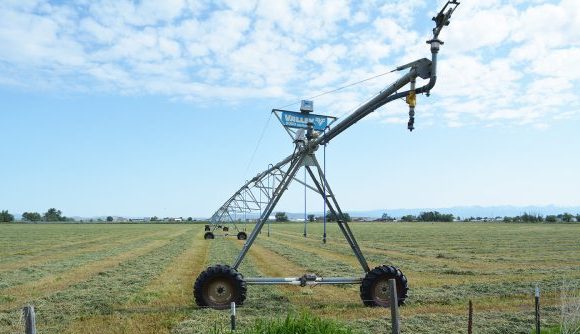Eye to the sky: How the National Weather Service deals with air quality concerns
Published 7:00 am Wednesday, October 26, 2022

- Evans
As the wildfire season continues to wind down, the days of smoky air and walls of haze obscuring the mountains will come to an end, and snow-capped crests will be in our future.
But even as the wildfires subside, the National Weather Service is always looking out for potential threats to air quality. While the weather forecast offices of the NWS don’t issue air quality forecasts, we still work closely with our air quality partners by providing meteorological support on the atmosphere and relaying key air quality alerts and information.
After all, prevailing weather conditions can have a tremendous impact on the air quality within a given area.
The National Weather Service, especially here in the western United States, deals primarily with air quality concerns pertaining to wildfire smoke. Forecasters keep an eye on wherever new and large wildfires pop up and monitor trends in the prevailing winds, as the winds above the surface can carry smoke downstream for several hundred miles.
This usually just results in hazy skies for areas well downstream of fires, but for areas closer to the fire’s footprint, smoke and poor air quality will prevail, which we reflect in the forecasts we issue to the public.
What about those “Air Quality Advisories” or “Air Quality Alerts” issued by Oregon and Washington, respectively? These products actually come from the Oregon Department of Environmental Quality and the Washington Department of Ecology.
However, these agencies will coordinate with us on potential trends of air quality while we provide information on smoke transport to craft the best advisories or alerts for the public during times of heightened wildfire activity. These agencies have their own set of criteria to determine when an air quality advisory or alert needs to be issued, utilizing tools such as the Air Quality Index (AQI), which measures the amount of pollutants in the air and relates it to human health.
But our forecasts play a crucial role in how both Oregon and Washington coordinate their messages and relief efforts from poor air quality, while also giving them an idea of how long potential impacts could last given ongoing weather conditions.
But what about beyond wildfire season? Heading into the winter, air stagnation becomes a potential issue. Air stagnation occurs when high atmospheric pressure and low winds inhibit the ability of pollutants to mix out of the air. Because of the unique terrain that comprises the Columbia Basin, the bowl shape of the area allows for pollutants to become trapped near the surface for long periods of time under the right conditions.
Forecasting the wind, as well as the strength and extent of high pressure thus becomes a key interest of the Washington and Oregon state environmental departments as well.
On rare occasions, chemical spills or leaks may create short-term but immediate impacts on air quality across more localized areas. In these situations, local law enforcement may request a “spot forecast,” or a short-term forecast for a specific point, in order to assess the potential impacts an incident could have on the public.
The National Weather Service utilizes specialized forecast models in these cases, designed to track the dispersion of a pollutant based on the prevailing weather conditions and the physical nature of the chemical. Such details are crucial for responders and local officials when coordinating cleanup efforts and, under worst-case scenarios, evacuation orders.
Air quality concerns never cease here at the National Weather Service, even outside of wildfire season. Whether it’s smoke, the accumulation of pollutants, or chemical spills, the wind will carry it downstream, making our forecasts a crucial tool for officials whose goal is to protect the public from the harmful effects of poor air quality, especially the elderly and other groups susceptible to respiratory ailments.









